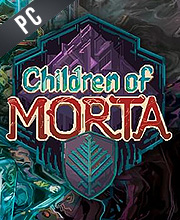


Una di queste ha luogo a Verona, nel nord Italia, dove, si dice, nel XIII° secolo, un’epidemia rendeva ciechi i bambini. Inoltre, molte sono le leggende che circondano la figura della santa. Perché una santa del sud Italia è venerata al nord? Prima di tutto, il culto di Santa Lucia si diffuse rapidamente da Siracusa al resto d'Italia e d'Europa. I doni potrebbero essere stati nascosti in casa in modo che si possano divertire a cercarli. La mattina del 13 dicembre, quando i bambini si svegliano, scoprono che parte del cibo che hanno lasciato sulla tavola è stato mangiato e, a loro volta, possono trovare dolcetti e monete di cioccolata.

Per ringraziare Santa Lucia dei regali, è consuetudine lasciare del cibo sulla tavola: arance, biscotti, caffè, un bicchiere di vino rosso, farina gialla, sale e fieno per l'asino che trasporta i doni. Nelle sere che precedono la festa, i bambini più grandi camminano per le strade del paese suonando una campana, per ricordare ai più piccoli di andare a letto presto, così Santa Lucia non li vedrà. Nei luoghi dove questa tradizione persiste, i bambini, proprio come fanno per Babbo Natale, scrivono una lettera alla santa elencando i doni che vorrebbero ricevere. Questo avviene grazie a Santa Lucia di Siracusa, la martire cristiana morta sotto la persecuzione di Diocleziano intorno all'anno 304. Il 13 dicembre, il giorno più corto dell'anno, il Natale arriva in anticipo per molti bambini del nord Italia. Geremia and Lucia, near the railway station in Venice. Her remains are kept in the parish church of Ss. By the sixth century, her cult was widespread, with churches dedicated to her in different cities, including Ravenna and Rome. Thus the tradition of gift-giving on Saint Lucy day began, according to legend. It is said that the sharing took place on the night between 12 and 13 December, thanks to Saint Lucy’s intervention. In the countryside, in the past, it was common for those who had had abundant harvests that year to donate part of it to those who had had a less fortunate season. The children accepted, the epidemic ended and from that moment on the tradition has remained.Īnother legend says what follows: Before the Gregorian calendar was modified, the winter solstice fell on December 13. To convince the children to participate, the adults told them that they would find, upon their return, numerous gifts. Alarmed, the citizens of Verona made a pilgrimage to the church dedicated to Saint Lucy, patron saint of the blind, barefoot and without a coat. One takes place in Verona, northern Italy, where, it is said, in the 13th century, an infectious disease made children blind. In addition, there are many legends surrounding the figure of the saint. Why is a saint from the south of Italy venerated in the north? First of all, the cult of Saint Lucy was quick to spread from Syracuse to the rest of Italy and Europe. The gifts may be hidden in the home for them to have fun finding them. On the morning of December 13, when children wake up, they find that some of the food they left on the table has been eaten, and, in turn, they may find candies and chocolate coins. To thank Saint Lucy for the presents, it is customary to leave some food on the table: oranges, cookies, coffee, a glass of red wine, yellow flour, salt, and hay for the donkey carrying the gifts. In the evenings leading up to the celebrations, older children walk the streets of the village ringing a church bell, reminding the smaller ones to go to bed early, so Saint Lucy won’t see them. Where this tradition lives on, children, just as they do for Santa Claus, write a letter to the saint listing the gifts they’d like to receive. That’s thanks to Saint Lucy of Syracuse, the Christian martyr who died under the persecution of Diocletian around the year 304. On December 13, the shortest day of the year, Christmas comes early for many children in northern Italy.


 0 kommentar(er)
0 kommentar(er)
